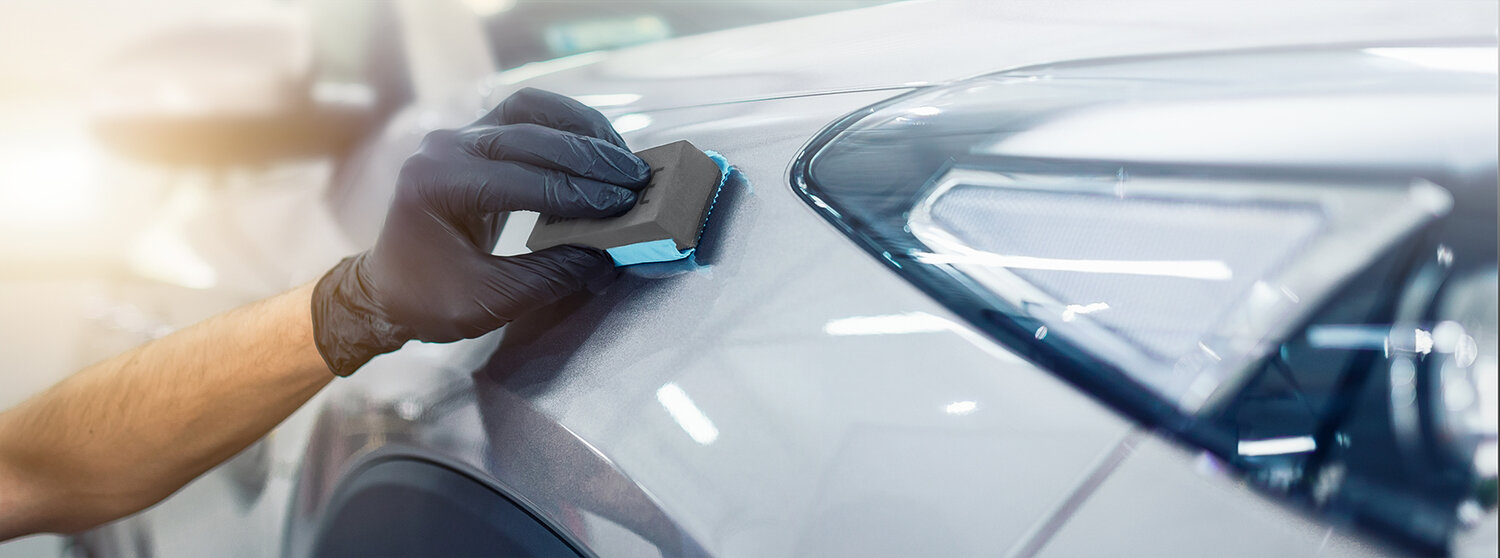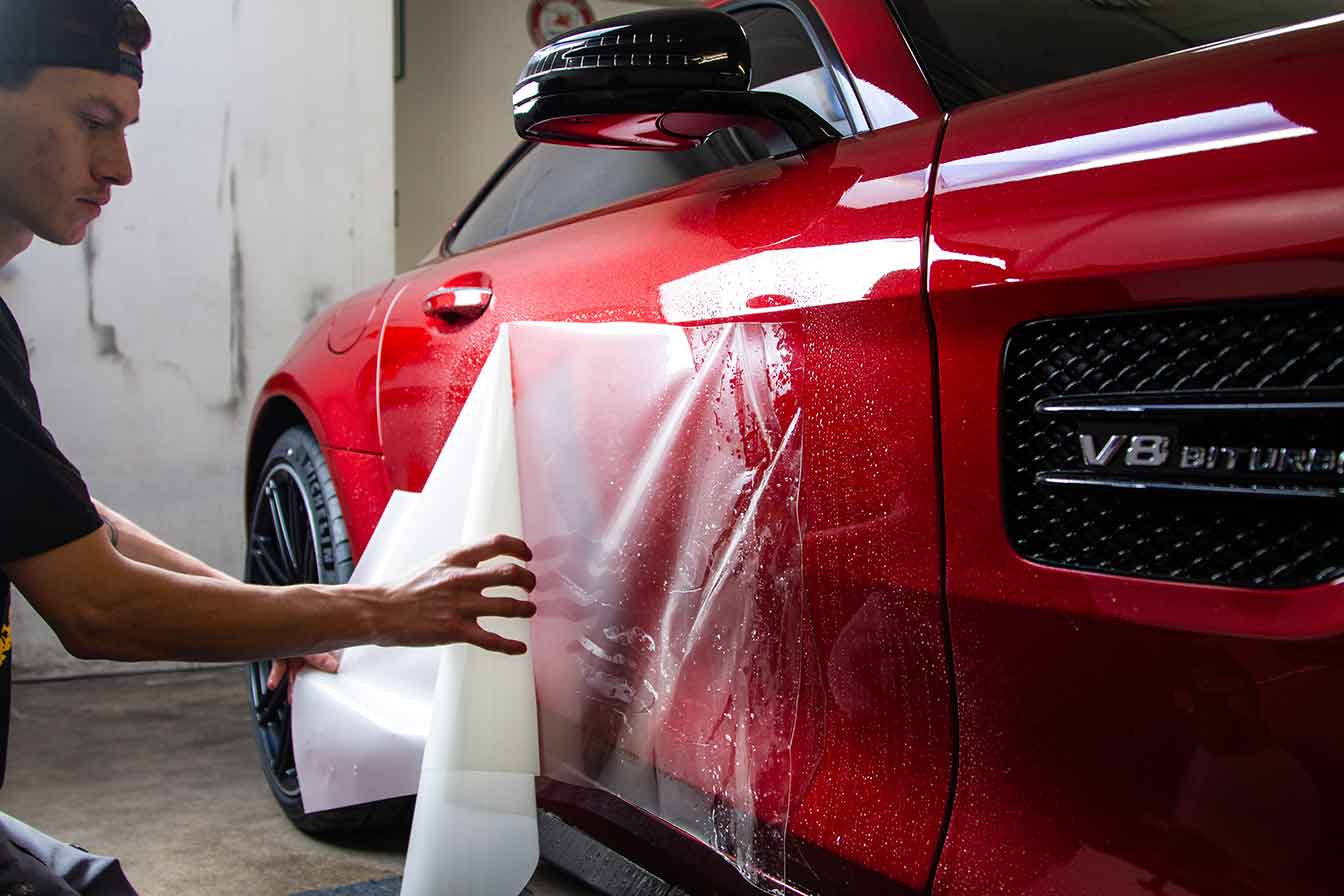Transform Your Trip with Ceramic Coating: A Step-by-Step Process
Transform Your Trip with Ceramic Coating: A Step-by-Step Process
Blog Article
Recognizing the Science Behind Ceramic Coating for Boosted Car Toughness
The science of ceramic covering is changing vehicle maintenance by giving a powerful shield against severe environmental variables. As we explore the elaborate structure and application procedure of ceramic coverings, we uncover the secrets behind their exceptional defense and long life (ceramic coating). Exactly how does this compare to traditional methods, and what implications does it have for car maintenance in the long term?

Structure of Ceramic Coatings
Ceramic layers are largely composed of silicon dioxide (SiO2), which is originated from natural products like quartz and sand. This compound forms the backbone of the finish, providing its particular hardness and resistance to environmental aspects. In addition to SiO2, ceramic layers usually incorporate titanium dioxide (TiO2) for improved UV defense and increased resistance to toxic wastes. These nanocomposite products create a robust, chemical bond with the car's surface, providing a long-lasting safety layer.
The solution of ceramic finishings is a meticulous process where the focus of SiO2 can considerably affect the layer's efficiency. Greater SiO2 material generally results in higher resilience and firmness, adding to the covering's ability to withstand scratches and chemical etching. The equilibrium of components is critical; too much SiO2 can make the layer breakable, while as well little can compromise its safety properties.
Producers may likewise incorporate extra materials, such as polysilazane, to improve flexibility and simplicity of application. These additives boost the layer's hydrophobic residential or commercial properties, guaranteeing water and pollutants bead off the surface area easily. This crafted make-up emphasizes the effectiveness of ceramic layers in guarding a car's outside against a range of negative conditions.
Application Refine Clarified
Using a ceramic coating to a lorry entails numerous critical actions, each vital to ensuring optimum attachment and performance of the protective layer - ceramic coating. The process starts with a thorough clean and decontamination of the automobile's surface to get rid of dust, crud, and previous waxes or sealants. This action is critical as any pollutants left externally can hinder the coating's ability to bond efficiently
Following the preliminary cleaning, the next step entails brightening the car to eliminate any flaws, such as swirl marks or scrapes. Polishing ensures a smooth surface, which is crucial for the layer to stick properly and provide an uniform finish. After brightening, a surface preparation spray is made use of to remove any type of remaining deposits and ensure that the surface is totally clean.

Protective Advantages
Frequently hailed for its exceptional safety top qualities, a ceramic finishing uses countless advantages that dramatically improve lorry durability. At its core, ceramic finishing forms a hard, semi-permanent obstacle over a lorry's exterior, which functions as a shield versus different ecological risks. This innovative layer of protection successfully protects against UV rays, oxidation, and fading, keeping the vehicle's initial paint and shine. It minimizes the threats positioned by dangerous impurities such as bird droppings, tree sap, and road crud, which, if left untreated, can lead to long-term damages.
Additionally, ceramic coatings display hydrophobic buildings, indicating they ward off water and promote a self-cleaning effect. This attribute minimizes the adherence of dust and mud, streamlining upkeep and cleansing procedures. The finishing's resistance to chemical etching better ensures that the car's surface remains unblemished despite exposure to severe cleansing representatives Clicking Here and pollutants.
In enhancement to these safety benefits, the ceramic layer boosts a lorry's aesthetic appeal by creating a glossy surface that accentuates shade depth and clarity. This not just sustains the vehicle's visual charm but also adds to its hop over to here long-lasting value by maintaining the honesty of its exterior over time.
Contrasting to Standard Methods
Unlike typical methods of car security, such as waxing or sealers, ceramic finishings provide an even more long lasting and durable option. Where waxes and sealers typically offer a short-lived layer of protection, commonly needing reapplication every couple of months, ceramic layers create a semi-permanent bond with the automobile's paint. This bond creates a protective layer that is immune to ecological impurities, UV damage, and minor abrasions.
Typical waxes are primarily made up of natural elements like carnauba wax, supplying a glossy coating however doing not have the robust safety high qualities of ceramic coatings. Sealants, while synthetic and offering slightly better longevity than waxes, still drop brief in comparison to the resilience and chemical resistance of ceramic finishes. The advanced innovation of ceramic layers integrates nanotechnology, which allows them to fill out microscopic imperfections in the paint surface area, leading to a smoother and much more hydrophobic finish.
In terms of application, ceramic coatings call for a more careful process, see this website typically necessitating specialist installation to make sure optimum efficiency. This contrasts with the fairly simple application of sealers and waxes, which can be applied in your home. The premium security and visual enhancement provided by ceramic finishes warrant the investment for those looking for lasting lorry preservation.
Long Life and Upkeep
How does the durability of ceramic finishings convert right into convenience of upkeep for lorry proprietors? The sophisticated formula of ceramic layers gives a durable safety layer on the vehicle's surface area, which significantly prolongs the life-span of the cars and truck's exterior coating.
Moreover, the hydrophobic nature of ceramic finishings makes it possible for water and various other fluids to bead up and roll off the surface, lugging dirt and debris with them. While the covering itself is lasting, it is not entirely maintenance-free. Therefore, ceramic finishes supply an important equilibrium between long-term durability and streamlined upkeep for lorry care.
Conclusion
Ceramic coverings, with their innovative chemical make-up of silicon dioxide and titanium dioxide, give a formidable barrier versus environmental damage, dramatically enhancing lorry resilience. When contrasted to typical approaches, ceramic coatings use superior protection against UV rays, oxidation, and chemical etching - ceramic coating.
The formulation of ceramic coverings is a meticulous process where the focus of SiO2 can significantly affect the finish's performance.Using a ceramic layer to a car includes numerous important actions, each necessary to ensuring optimum adhesion and efficiency of the safety layer.Often hailed for its remarkable protective qualities, a ceramic finish provides many benefits that substantially improve lorry longevity. The sophisticated solution of ceramic coatings offers a robust protective layer on the lorry's surface, which substantially expands the lifespan of the automobile's exterior surface.Ceramic finishings, with their innovative chemical make-up of silicon dioxide and titanium dioxide, supply a formidable barrier versus environmental damage, considerably improving automobile resilience.
Report this page